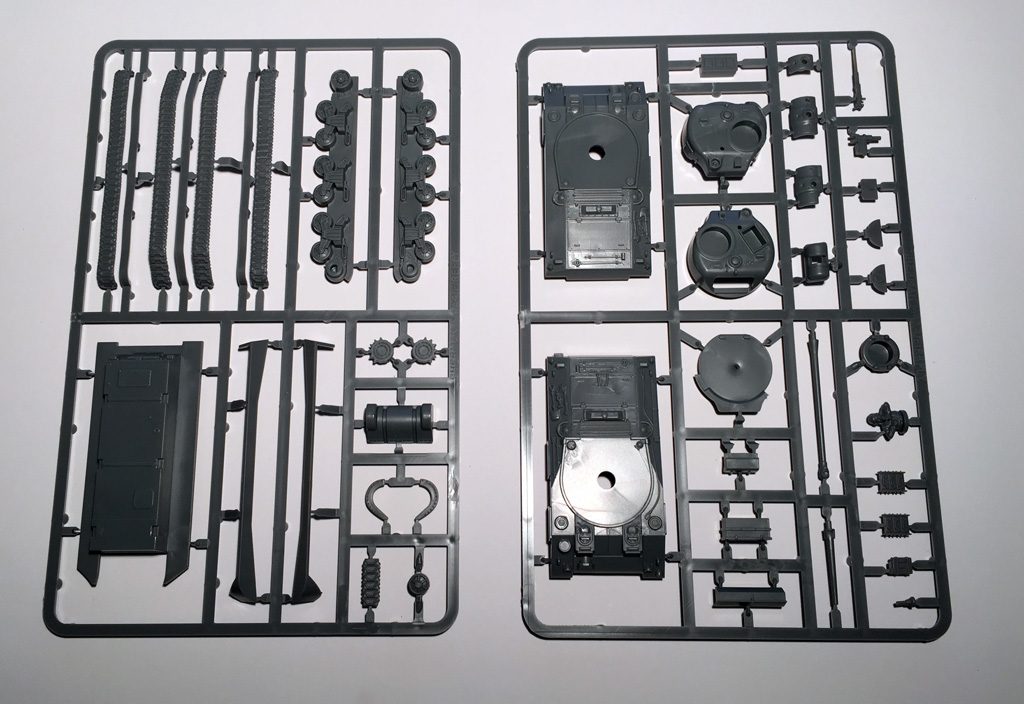Our gaming group regularly plays Rapid Fire in 20mm scale, set in North Africa. The extensive range of vehicles, figures and terrain we use all belong to Dave, although a few of us have donated the odd model to his collection. So far I feel I haven’t contributed much to the group in terms of games and so I thought I should explore Rapid Fire and perhaps Crossfire too.
I have a strong interest in the battles of North-west Europe, both in the Fall of France and in the days between the Normandy landings and the Rhine crossings, initially from the British Commonwealth viewpoint and then adding in the Americans.
My collection of WWII figures has been purely 28mm to date, aimed at skirmish gaming at the Platoon-level – infantry combat with the occasional vehicle as support. Rapid Fire is set at the Brigade-level and Crossfire is Company-level, and both games allow numbers of tanks and SPGs on the table, and even aircraft and direct-fire artillery. Cool! But 28mm is too large a scale for that type of game so I decided (after much soul searching) to change to 20mm. The range of model vehicles available in that scale is superb, especially for mid and late war settings, so I thought I’d start in 1944 and then, at a later date, look back to 1940.
I ordered enough British Airborne figures for a Company, reinforced with heavy weapons teams (PIAT and HMG) with a view to playing out scenarios from the Airborne assaults of D-Day (including but not limited to the Pegasus Bridge coup-de-main operation). The figures I chose were from the exceptional range of AB Figures ( http://abfigures.com ). Painting them at my snail-pace is going to take me a while mind you.
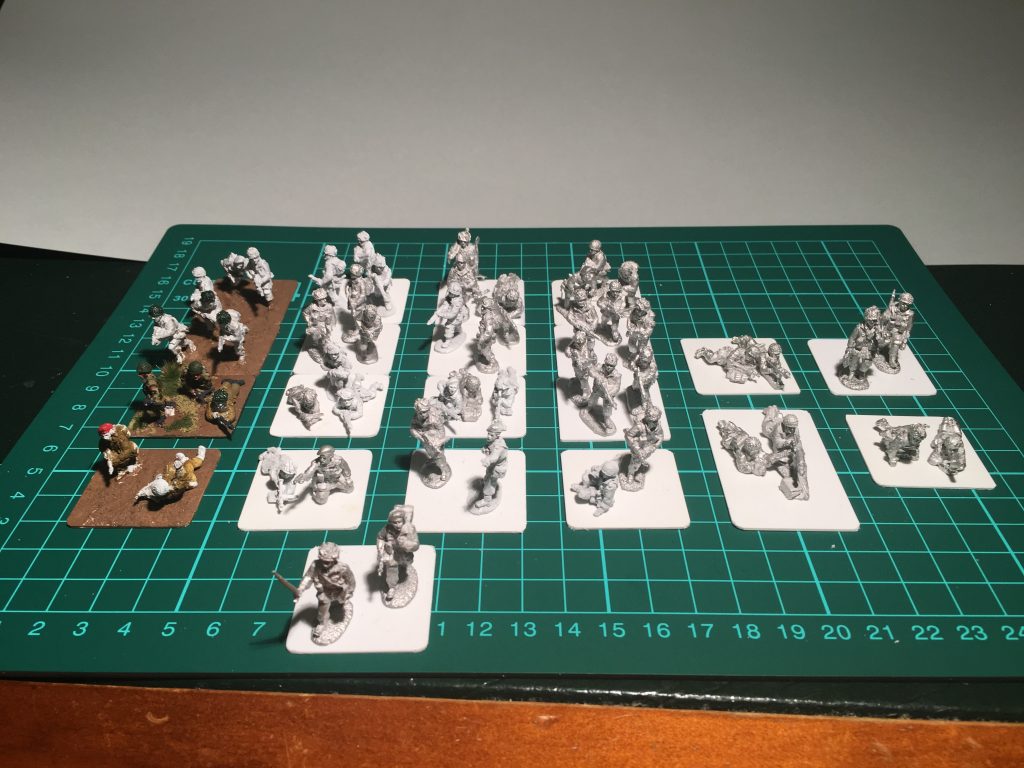 |
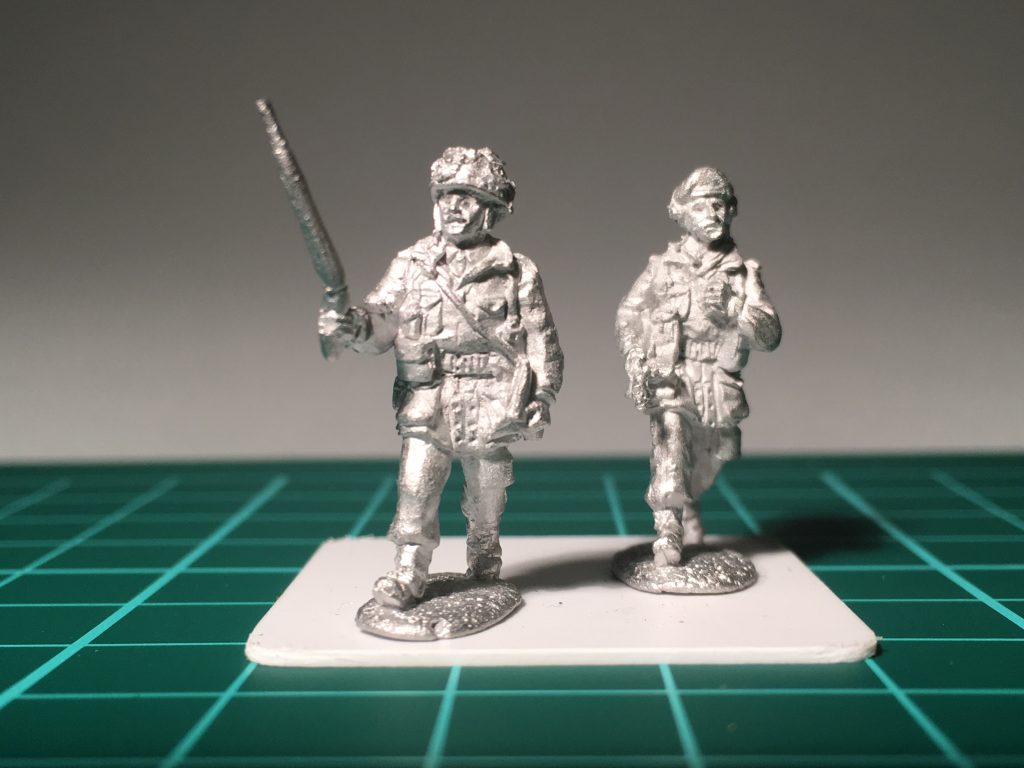 |
So to get me in the mood for this, I went out and bought some vehicles. A box of StuG IIIs and a box of Sherman Firefly/M4A4 tanks, both from Plastic Soldier Company. Quick and easy to build, robust enough for the tabletop, but still very well detailed, these plastic kits are ideal for wargaming. I have kits from Airfix, S-Model and Dragon that are all beautifully detailed, but quite complex to build and I’m not entirely sure they will withstand my clumsy fingers during game-play. The ones from PSC seem pretty sturdy and you get 3 vehicles in a box. The only downside is that they don’t come with decals, although PSC does sell them as separate sheets.
The first vehicles I made were the StuGs and I’m pretty pleased with how they came out. I used some spare decals that I had in the ‘bits box’ but I’m going to have to invest in some more I think. We can’t have our forces running around the battlefield without proper markings can we!
My paint scheme for German armour runs as follows:
Base colour: Vallejo Middlestone 882 painted on with a wide brush.
Camouflage colours: Burnt Umber and Cerulean Green. I use raw pigment powder from an art supplies shop, with a size 1 flat brush dipped into the powder and then brushed on, with the excess blown off. I then spray the model with a liberal spraying of matt varnish (Tamiya TS-80 or Testors Dull Coat).
Weathering and paint chipping: I take a 3/0 brush and dip it into undiluted Vallejo German Grey 994. I then tap the brush along the leading edges of the model where the greatest wear and tear will occur – near the running gear and where the crew climb in and out of the vehicle. I then use sand coloured raw pigment powder and brush it over the lower part of the vehicle to represent road dust (again, fixed in place with spray varnish).
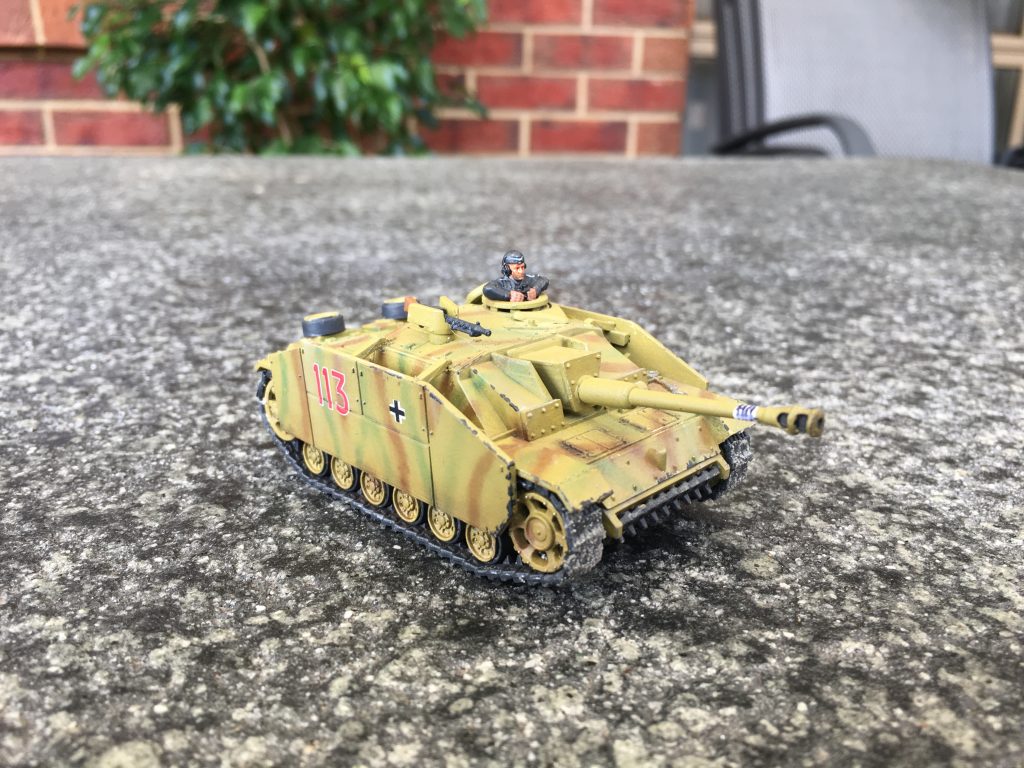 |
I constructed one of the Shermans as a Firefly, with the long 17pdr barrel and different hull and turret design; the other two will be M4A4s with the shorter 75mm barrel. Historically, there was one Firefly per troop of 4 tanks, so seeing three together would be very unusual.
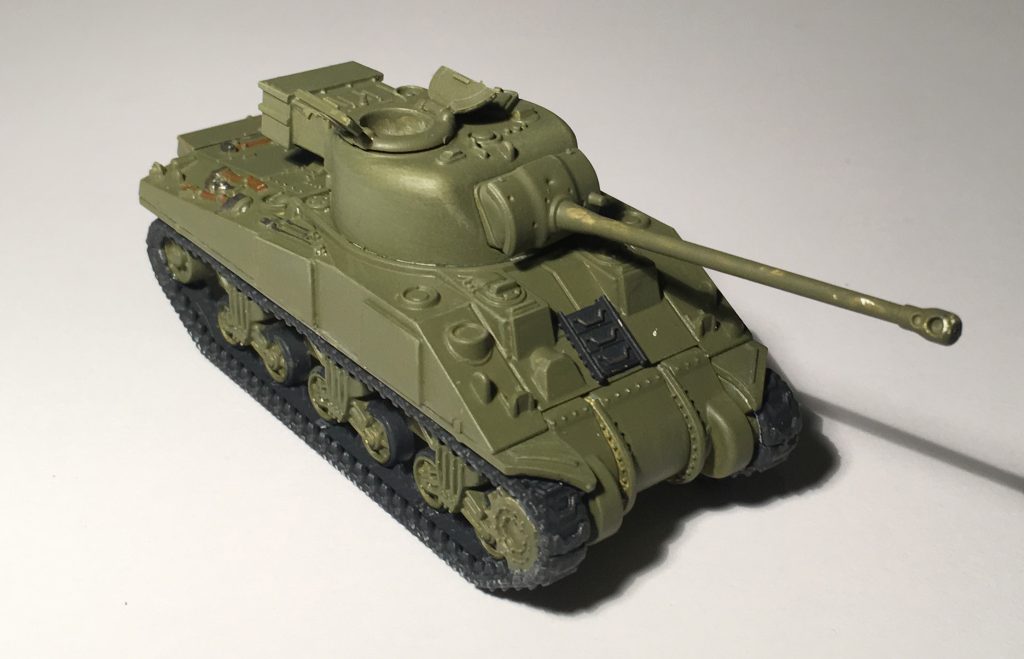 |
The base colour I have chosen for the Commonwealth vehicles is P3’s Traitor Green. As yet, I haven’t weathered this vehicle because it has no decals. It’s best to affix the decals first then weather it afterwards.
After these are painted, I will do a number of Jeeps, cut down to represent the modified versions used by the British Airborne in Arnhem. Lots more to come for both sides of the conflict, so I fully expect this to be a long-term project.
